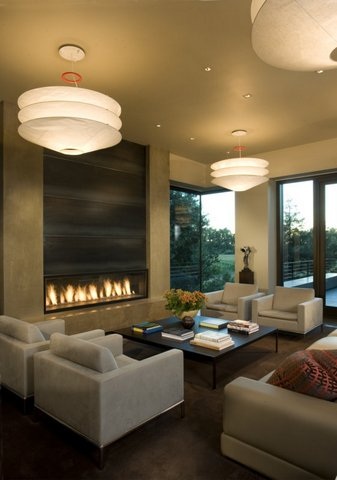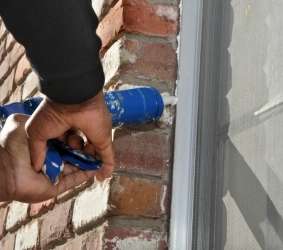How to Light Up Your Home — and Your Life

The right kind of lighting can create just the perfect ambiance for your home. For example, by layering light, like in this master bedroom, you’ll have a comfortable, relaxed feel. Photos courtesy of Randall Whitehead; photos by Dennis Anderson.
Have you ever walked into a room, looked in a mirror and thought, “Wow, I look good!” and then turned around and noticed everybody around you looks fabulous too?
That’s probably because the room was perfectly lit. “The right lighting can make us look and feel good,” says San Francisco lighting designer Randall Whitehead, author of Residential Lighting: A Practical Guide to Beautiful and Sustainable Design.Proper lighting can also make it easier to enjoy our homes by creating the right ambiance for every room. Knowing which type of light to choose and where to place it will make a significant difference in your home’s overall appeal, not only to you but to your neighbors and guests, too. It’s also one of the least expensive ways to help your home come alive. Here’s a rundown of the top tips for lighting your perfect home:
Layer the Light
“One fixture can’t do everything,” says Whitehead. Instead, he recommends you layer at least three types of light in every room. Start with ambient light, which fills the room and usually bounces off the ceiling, softening the shadows on people’s faces.
This indirect light makes people feel comfortable, like walking into a room with a crackling fire. Scones and torchiere lamps can also do the trick, just remember to pair it with at least two other light sources, such as over-the-desk task lighting and decorative light sources over islands and tables, for example.
Choose the Right Task
Anything that requires a certain amount of concentration, such as cooking, reading or shaving, benefits from the right amount of task lighting. In kitchens, these lights are usually found under the cabinets, illuminating your work space as you prep food.
In a bedroom, it’s often by the bed for late-night reads or over a desk for when it’s time to study or sit down to open mail.
In bathrooms, it’s frequently on either side of the bathroom mirror, illuminating the space for careful makeup application, for example. Even closets can benefit from task lighting. If yours is large enough, consider installing lights to help you choose the perfect outfit for those big meetings or special events.
As you design and build your home, go room by room and consider what “tasks” you’re likely to accomplish in each, then choose your lighting appropriately. Remember that most rooms serve more than one function, so make sure you layer your light sources.
Always Use a Dimmer
Dimmers can help you set different scenes, like the one you prefer for entertaining and the one you rely on when studying or paying bills. Hence, just about every light switch should have a dimmer. This gives you an enormous sense of control over the ambiance and allows you to accommodate for day or night, as well as specific tasks. Dimmers are generally inexpensive, easy to install and can be found at home improvement stores.
Give Your Home a Little Bling
Decorative light is just that, decorative. It’s designed to provide a visual sparkle for a space, draw people in and set the mood, says Whitehead. “I like to call it architectural jewelry,” he says. This is usually the “wow” chandelier above a staircase or foyer or the eye-catching fixture hovering indiscreetly over a kitchen island or dining room table. It doesn’t exactly provide the kind of light by which to perform tasks, but it certainly tells the world what kind of family lives there.
Pick the Right Accents
Just about every home has something worthy of the spotlight (besides you, of course). Perhaps you have a marvelous green thumb and you want to shine a light on your gorgeous succulents display or maybe it’s a beautiful piece of art you acquired — whatever it is, accent lighting can help you draw attention to it. While it certainly highlights objects, accent lighting also creates depth and dimension, providing an extra special “light layer” to a room.
 Usually this type of lighting is adjustable, giving you a certain degree of flexibility (think track and recessed light, for example). The trick is to use it sparingly. A room filled with too many “special objects” quickly loses its sparkle. Instead, use accent light to draw the eye toward your most extraordinary pieces.
Usually this type of lighting is adjustable, giving you a certain degree of flexibility (think track and recessed light, for example). The trick is to use it sparingly. A room filled with too many “special objects” quickly loses its sparkle. Instead, use accent light to draw the eye toward your most extraordinary pieces.Do Candlelight Right
Who doesn’t love candlelight? Just about everyone, right? Sure, but how many people know how to use it in the most flattering way? Not many. “Most people make the mistake of putting the flame at eye level,” says Whitehead. “But that disrupts your ability to see other people.” Opt for votive candles, which are short, or long candelabras that reach above the sight line.
Once you’re armed with the right lighting tips, you can turn even the drabbest home into one that pulses with the right mix of energy and excitement, as well as calm and coolness


 As a Christian and a family focused builder, I believe that faith is a key ingredient in small business success. In this current economy, the people of God must remember that if you honor God through your business he will direct your path. Use these bible verses in the good and tough times in your small business.
As a Christian and a family focused builder, I believe that faith is a key ingredient in small business success. In this current economy, the people of God must remember that if you honor God through your business he will direct your path. Use these bible verses in the good and tough times in your small business.





